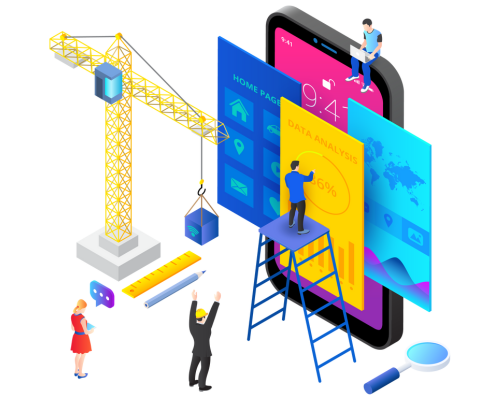The user interface (UI) of industrial software is often overlooked in favor of raw functionality and technical performance. Yet the importance of a well-designed UI in this context is crucial. Learn why a good user interface is essential in industrial software and how it can positively transform operations and productivity in the industry.
1. Facilitate adoption and use
 One of the main advantages of a well-designed UI is that it facilitates the adoption and use of software. In the industrial field, users may have varying levels of technical competence. An intuitive interface allows operators to quickly familiarize themselves with the software, reducing training time and costs.
One of the main advantages of a well-designed UI is that it facilitates the adoption and use of software. In the industrial field, users may have varying levels of technical competence. An intuitive interface allows operators to quickly familiarize themselves with the software, reducing training time and costs.
2. Improve productivity
A clear and functional user interface can significantly improve productivity. Industrial software is often complex and incorporates many features. A well-thought-out UI helps streamline processes, reduce errors and speed up task execution. For example, customizable dashboards and data visualization tools can help operators monitor performance and make decisions faster.
3. Reduce errors and risks
Industrial environments are often demanding and involve high risks. A poorly designed UI can lead to costly or even dangerous mistakes. By making information clear and accessible, and simplifying complex procedures, a good user interface can help minimize human error and improve workplace safety.
 A concrete example is the Gemba-Walk software, whose «swipe» UI allows employees who make their floor tour to be in real-time observation mode. This intuitive interface allows users to simply swipe the screen to record observations, anomalies or suggestions for improvement without having to navigate through complex menus. By facilitating fast and accurate data entry, this feature significantly reduces the risk of human error and ensures that critical information is captured reliably and efficiently, thus contributing to better safety and process optimization in the field.
A concrete example is the Gemba-Walk software, whose «swipe» UI allows employees who make their floor tour to be in real-time observation mode. This intuitive interface allows users to simply swipe the screen to record observations, anomalies or suggestions for improvement without having to navigate through complex menus. By facilitating fast and accurate data entry, this feature significantly reduces the risk of human error and ensures that critical information is captured reliably and efficiently, thus contributing to better safety and process optimization in the field.
4. Support for maintenance and troubleshooting
Industrial software is not limited to production; it also plays a crucial role in equipment maintenance and troubleshooting. An intuitive user interface can facilitate problem identification and resolution. For example, built-in visual warning systems and diagnostics can help technicians quickly identify faults and respond effectively.
5. Increase employee engagement
Employees who find their work environment pleasant and easy to navigate are more likely to engage and stay motivated. A good UI helps create a sense of job satisfaction by making everyday tasks less stressful and more rewarding. It can also promote better talent retention and reduce turnover.
6. Adaptability and Scalability
A flexible and scalable UI is essential in the industrial sector where needs and technologies are rapidly evolving. Software with adaptable interfaces allows to integrate new features without disturbing the user experience. In addition, a modular UI can be customized to meet the specific needs of different industry sectors, increasing the versatility of the software.

The user interface in industrial software should not be an afterthought. On the contrary, it should be considered as an integral part of software development, as well as technical performance and functionality. By investing in a quality user interface, industrial companies can not only optimize their operations, but also improve the satisfaction and safety of their employees.
If you are looking to improve your industrial software with an intuitive and efficient user interface, our custom web development services can help. Contact us today to find out how we can transform your industrial tools and maximize your productivity and safety.

